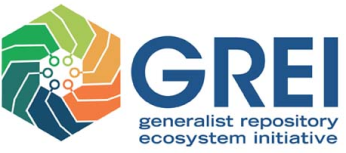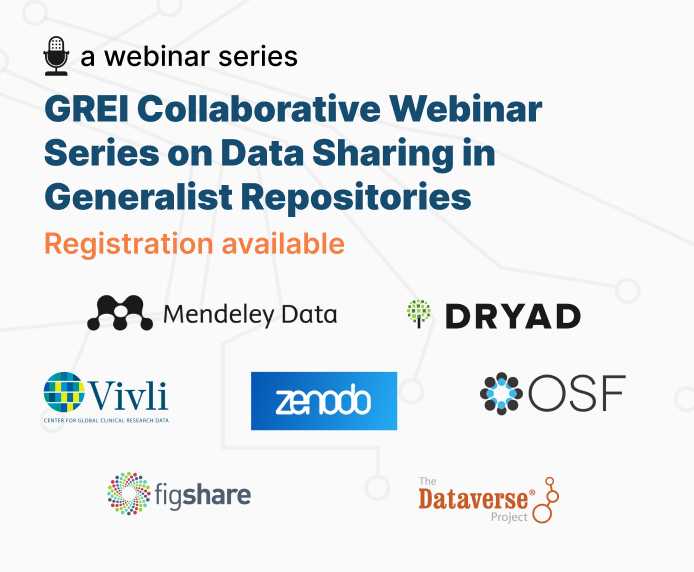Search the repository
Recently published
- Borderland Minho industriesInformation about financial data in industries in the borderlands of the Minho River in Spain
- Dataset
- Cherry-Picking in Central Bank Currency Swaps: Empirical Insights into the Determinants and Income Bias in Swap Access during CrisesReplication dataset for "Cherry-Picking in Central Bank Currency Swaps: Empirical Insights into the Determinants and Income Bias in Swap Access during Crises" Abstract Since the 2007-9 global financial crisis, central bank currency swaps have become a crucial element of the Global Financial Safety Net (GFSN) – the set of institutions and arrangements that backstop countries in financial distress. Considering the uneven distribution of swaps among countries, our study empirically investigates the determinants of access to swaps, employing logistic panel regressions on a comprehensive novel swap dataset covering 194 countries from 2007-2022. The width of this dataset allows us to verify the effect of crisis indicators, country-specific variables and bilateral relations. By analyzing swaps provided by all central banks, the results indicate that both the US Federal Reserve and the People’s Bank of China act as quasi-international lenders of last resort, distinguishing these institutions from other swap providers. However, contrary to prior assumptions, we find that a country’s income level is a more significant factor in securing access to swaps than crisis status or external debt levels: advanced economies are more likely to receive swaps during crises than middle-income countries, and low-income countries are completely excluded from swaps. Other important determinants of swap access are economic size, country risk, trade agreements and geographical closeness. Finally, the results point to the interaction between different elements of the GFSN, showing that unconditional IMF lending lowers the likelihood of access to a central bank swap. Overall, these findings provide a better understanding of the dynamics of central bank swaps as a crisis finance instrument, which is crucial for evaluating the resilience of the international financial system and ensuring adequate support for all countries facing financial distress. Furthermore, they highlight potential gaps in the GFSN and raise questions about its inclusivity and efficacy in addressing systemic shocks and economic vulnerabilities. Addressing these flaws is crucial for sustained global economic growth and achieving the United Nations Sustainable Development Goals.
- Dataset
- Validez de un modelo de envejecimiento vascular acelerado como índice de riesgo cardiovascular en adultos sanos: análisis factorial confirmatorio. Estudio EVasCu.En los últimos años, la predicción del riesgo cardiovascular ha constituido la base en las guías clínicas de prevención cardiovascular, generando evidencia científica respecto a la importancia de los profesionales de enfermería en el manejo del riesgo cardiovascular. El concepto de envejecimiento vascular acelerado representa un modelo potencialmente beneficioso para la investigación futura de los mecanismos fisiopatológicos que subyacen a las manifestaciones tempranas de la enfermedad cardiovascular. Por este motivo, los objetivos de este proyecto serán: verificar mediante un análisis factorial confirmatorio el concepto de envejecimiento vascular acelerado en un único factor, y generar una calculadora para estimar un índice con el modelo de mejor ajuste estableciendo niveles de alto, moderado y bajo riesgo de envejecimiento vascular acelerado para el cribado de riesgo de enfermedad cardiovascular en sujetos sanos. El estudio EVasCu tendrá un diseño transversal, se realizará en el Centro de Investigación de la Universidad y en Centros de Salud de la ciudad seleccionados, para el cual será necesaria una muestra de 355 adultos sanos. Para examinar la validez de constructo de un modelo de un solo factor para medir el envejecimiento vascular acelerado, se examinarán diferentes modelos que incluyan parámetros vasculares, clínicos y bioquímicos para determinar qué variables de estos tres grupos muestran mejor ajuste. A partir del modelo que mejor ajuste muestre se generará una calculadora que estimará un índice de envejecimiento vascular acelerado, y los valores generados se categorizarán por este índice en tertiles para establecer niveles de alto, moderado y bajo riesgo de envejecimiento vascular acelerado.
- Dataset
- Cotugno N, 2024, JCI Insight datasetsFLUIDIGM_Combined_Chip_Run_MenB.csv contains the raw data from FLUIDIGM platform. MenB_DEGS_output_file.xlsx contains the complete results of the limma DEGs analysis MenB_Figures_data.xlsx contains the dataset used to generate the analysis reported in figures.
- Dataset
- Isotope evidence for copper migration and enrichment in the mantle wedge and implications for porphyry copper depositsWe here present a combined study of the Cu elemental and isotopic compositions (δ65Cu) as well as Fe3+/∑Fe ratios on a well-characterized suite of the Mg-lherzolites, Fe-rich peridotites and pyroxenites from the Bohemian Massif in a Variscan subduction zone. The data included in this study allow us to investigate the migration, redistribution and enrichment of Cu in the mantle wedge and to relate those processes to the genesis of porphyry copper deposits. Table 1 presents selected major and trace element contents, mineral modal abundance, Fe3+/∑Fe and Cu isotopic compositions of the Bohemian peridotites and pyroxenites along with Cu isotopic data of reference materials; Table S1 presents all major (wt %) and trace (μg/g) element concentrations of the Bohemian peridotites and pyroxenites from Ackerman et al. (2009), Svojtka et al. (2016) and Huang et al., (2019); Table S2 presents the calculated variations of Cu contents and δ65Cu values in the evolved melts during melt-peridotite reaction in the mantle.
- Dataset
- “INTER RATER RELIABILITY AND CONCURRENT VALIDITY OF STROKE SPECIFIC SHOULDER DISABILITY INDEX: A CROSS SECTIONAL STUDY”There are many scales developed for assessment of upper extremity functions in stroke patients. But they could not include the shoulder domains like shoulder pain, subluxation, ROM and quality of life. A validated scale i.e. SSSDI was developed which covers all domains. Intra-rater reliability and content validity of this scale is already estimated. There is no specific study until date which calculates the inter-rater reliability and concurrent validity of SSSDI. So it is necessary to conduct a study which shows inter-rater reliability and concurrent validity of this scale. The objective of this study is to measure the inter-rater reliability and concurrent validity of this scale. So that researcher and clinicians use this scale effectively in clinics and academics purpose.
- Dataset
- Realistic TRACE Input Model for 4-Loop PWR LOCA AnalysisIncluded are the TRACE steady state and transient restart input files for a Westinghouse 4-loop PWR LBLOCA analysis as described in: A. Wysocki and N. Capps, "A Realistic TRACE PWR LOCA Model with Application to High Burnup Analysis," Annals of Nuclear Energy (in progress), 2024. The model is an improved version of the typpwr.inp model provided with the TRACE and SNAP code distributions, including the following main modifications: - Replaced the original pipes and side junctions in the core/vessel region with a VESSEL component - Split the lumped intact loop into 3 separate loops - Split the VESSEL core region into two radial rings and 4 azimuthal sectors - Modified the ECCS consistent with the OECD BEMUSE LBLOCA benchmark specifications - Enabled CSS - Enabled detailed fuel rod modeling options Please cite the above mentioned paper in all publications that made use of this file.
- Dataset
- CAN ARTIFICIAL INTELLIGENCE OVERTHROW HUMAN RESOURCES IN THE SUPPLY CHAIN INDUSTRY? A QUALITATIVE REVIEWArtificial Intelligence is facilitating the automation of routine tasks and processes in supply chain management, freeing up human resources to attention more on strategic activities. It enables firms to identify blockages, mitigate risks, and make informed decisions to accelerate smoother operations. Empirically, the study examined how AI is capable to depose human resources in the supply chain industry. Artificial Intelligence is attributed to that activity devoted to making machines intelligent, and intelligence is that quality that enables an entity to function appropriately and with foresight in its environment. Specifically, AI, can drive supply chain planning, including but not limited to production, inventory management, and product distribution. This study adopted Systematic Review because it is an overview of primary studies which contains an explicit statement of objectives, materials and methods and has been conducted according to explicit and reproducible methodology. In terms of technology, Artificial Intelligence software has machine programming that provides different ways of learning at the workplace with regards to an employee’s job, experience and companions. It also reduces boredom at the workplace since monotonous tasks can be easily performed with the application of Artificial Intelligence. The study recommended that by leveraging on AI and ML, companies can reduce operator error and processing times, process massive and diverse data sets from across all functions to provide better visibility within the supply chain whilst increasing efficiency and productivity. Also, there should be room for design training and development plans for each employee from background processes, based on big data or data analytics related to employment practices in real time. Finally, artificial intelligence should be used in a practical and effective manner that will improve the achievement of the human resource management tasks in the field of employment, evaluation and performance measurement to foster supply chain resilience goals
- Dataset
- Expanding the Landscape of Drug Targets for 112 Chronic Diseases Using a Machine Learning-Assisted Genetic Priority ScoreIdentifying genetic drivers of chronic diseases is crucial for drug discovery. We developed a Machine Learning-assisted Genetic Priority Score (ML-GPS) that incorporates genetic associations with predicted disease phenotypes to enhance target discovery. Dependencies: - Python 3.11.6 - scikit-learn 1.4.1 - LightGBM 4.0.0 - scipy 1.12.0 - statsmodels 0.14.1 Jupyter notebooks: 1. Phecode diagnosis prediction models - code to train phecode diagnosis prediction models among UK Biobank participants. 2. ML-GPS models - code to train ML-GPS in Open Targets and externally test it in SIDER. Cleaned Open Targets and SIDER datasets are in the "Datasets" folder. Models take approximately 10 minutes to train on 24 threads.
- Dataset
- 25-hydroxyvitamin D3 mediates the associations between urinary heavy metals and non-melanoma skin cancer: Insights from a population-based studySupplementary Material Article type: Original article Title: 25-hydroxyvitamin D3 mediates the associations between urinary heavy metals and non-melanoma skin cancer: Insights from a population-based study Kexun Zhang, MD1, Ke Zhang, MS2, Hua Wang, MD1, Feng Hong, PhD3*, Wei Zhang, MD, PhD2* 1 Department of Infectious Disease Control, Kunshan Center for Disease Control and Prevention, Kunshan, Jiangsu, China. 2 Department of Dermatology, Affiliated Hospital of Guizhou Medical University, Guiyang, Guizhou, China. 3 School of Public Health, the Key Laboratory of Environmental Pollution Monitoring and Disease Control, Ministry of Education, Guizhou Medical University, Guizhou, China. *Corresponding author: Feng Hong, PhD Wei Zhang, MD, PhD No. 28 Guiyi Street, Guiyang, Guizhou, 550001, China Email: fhong@gmc.edu.cn, weizahn@gmc.edu.cn Supplementary figures: 2 (Figure S1, Figure S2) Supplementary tables: 3 (Table S1, Table S2, Table S3)
- Dataset

The Generalist Repository Ecosystem Initiative
Elsevier's Mendeley Data repository is a participating member of the National Institutes of Health (NIH) Office of Data Science Strategy (ODSS) GREI project. The GREI includes seven established generalist repositories funded by the NIH to work together to establish consistent metadata, develop use cases for data sharing, train and educate researchers on FAIR data and the importance of data sharing, and more.
Find out moreWhy use Mendeley Data?
The Mendeley Data communal data repository is powered by Digital Commons Data.
Digital Commons Data provides everything that your institution will need to launch and maintain a successful Research Data Management program at scale.
Find out moreData Monitor provides visibility on an institution's entire research data output by harvesting research data from 2000+ generalist and domain-specific repositories, including everything in Mendeley Data.
Find out more